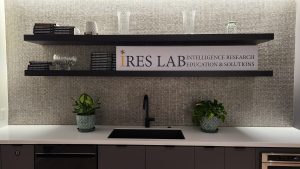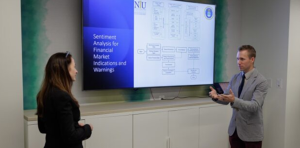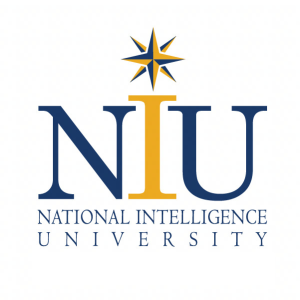NIU Opens Innovative, Unclassified Research Lab in Washington, D.C.
January 10, 2024

In a research lab above a Chevy Chase Cheesecake Factory and a T-Mobile, students, government employees, and experts from industry and academia are attempting to address some of the nation’s most pressing technological challenges.
While the collaboration is inspired by a goal to strengthen partnerships in the National Intelligence Strategy released by the Office of the Director of National Intelligence (ODNI), the guards, gates, and tall fences often associated with the Intelligence Community (IC) are missing at Chevy Chase Pavilion in Washington D.C.’s Friendship Heights.

And that’s precisely the point, said Director of Operations for the National Intelligence University’s Intelligence, Research, Education, and Solutions (iRES) Laboratory Jake Sotiriadis.
“We are in the generative AI era, (our university and our IC) can’t afford to be overly inward looking,” said Sotiriadis, referring to strictly solving problems through government channels. “We’ve we’ve got to be outward looking, and that means forging solutions both inside and outside of the government and the IC.”
During a ribbon cutting ceremony on Jan. 10, National Intelligence University (NIU), in partnership with ODNI and the Department of Energy’s Pacific Northwest National Laboratories (PNNL), opened an unclassified lab that will be used to test cutting-edge technology, conduct research, and host symposia. The space features a conference center with seating for up to 70 people, two classrooms, a meeting room, a podcast-recording studio, a 3D printing lab and more.
NIU President John Ballard pointed to the need to better understand emerging technologies and shifts in education as reasons for opening the new facility less than three miles from NIU’s home at Intelligence Community Campus-Bethesda – a classified facility.
“We must adapt. We must seek new, bold ways of developing the creativity and confidence that will be required among all of our most senior intelligence professionals so that they can overcome and ideally gain advantage from these transformative effects in the coming decades,” said Ballard.

Posters around iRES touted the possibilities: additive manufacturing, cyber intelligence and data science, to name a few.
“We need to embrace and integrate emerging technologies so that our graduates are able to maximize their benefits while also managing the risks that they pose,” added Ballard.
iRES will also test students outside of the classroom. Ballard called it coursework that rewards creativity and critical thinking and it isn’t solely based on banking knowledge. In a research setting, as new information is presented, how do students adjust and conceptualize new ideas?
While NIU and PNNL will maintain the space, Sotiriadis said it is open to the IC, which isn’t swimming in unclassified collaboration spaces. iRES’s building includes a parking garage, Embassy Suites by Hilton hotel, and is walking distance from the Friendship Heights Metro stop.
Director of National Intelligence Avril Haines discussed the importance of leveraging open source data expertise, knowledge, and experience to enrich the IC’s work. She said she hoped it would have the same effect on the private sector.
“So much of what I hope happens here will actually give us the energy and the capacity to address the great challenges that we put in our Annual Threat Assessment,” said DNI Haines, referring to the report and briefing she delivers each March to Congress and the public. It covers everything from adversarial threats to technological challenges that could affect national security.

The National Intelligence Strategy DNI Haines released in August calls on IC elements to “diversify, expand and strengthen partnerships” as one of its six priorities. In particular, the strategy states that “the IC must build new and restructure existing collaborative mechanisms with non-state actors and find ways to enhance the flow of information to and from these actors in ways that safeguard our national security and prosperity.”
Ballard discussed how iRES will deliver on that goal by providing space to explore innovative technologies and by bringing partners into the unclassified space that previously had a difficult time collaborating with NIU students and IC experts.
“It allows us to work more in the open to develop things and build on research and best practices from other individuals, other developers without running into firewalls,” said Lisa Marie Harrison Meyers, an NIU student who works at the National Geospatial-Intelligence Agency.

Harrison Meyers called being in an environment with less restrictions “empowering.” Fellow NIU student Chip Thorn, an Air Force officer, pointed out that while some of his projects may be classified, the technological challenges associated with them, such as writing code, usually are not.
“So this place provides a space that is really a force multiplier,” he said. “I now get to meet with this whole new avenue of people that I could never meet with at ICC-B.”
In June, NIU held a pilot symposium in the space that brought together government and private sector experts to discuss artificial intelligence safety. The day after the ribbon cutting, iRES held the first event in NIU’s series on the future of technology in the IC. Academic, industry and government experts gathered to discuss quantum.
“Public-private sector partnerships are the key,” said Sotiriadis. “That really is the future of intelligence.”
![]()

